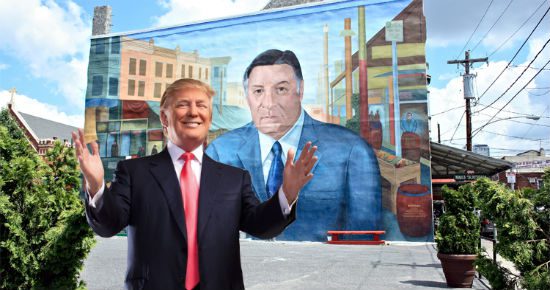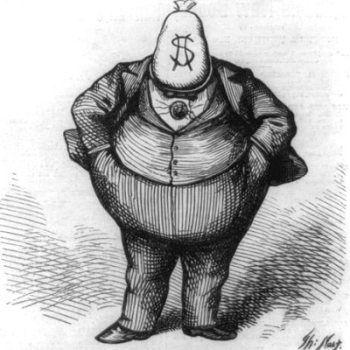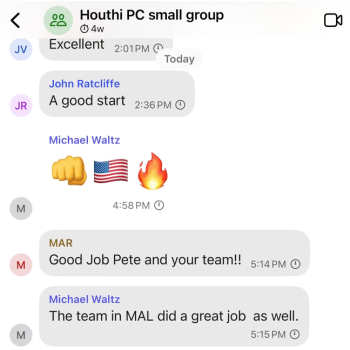On Thursday I’m headed back to school. I’ll be at Temple University to hear several promising young scholars — including my older daughter — present their history research papers. Pretty cool.
My daughter’s research focuses on public housing in Philadelphia during the Rizzo years. Frank Rizzo was a pugnacious Philly beat cop who rose through the ranks to become police commissioner and then mayor. He was a master of euphemistic racial politics, realizing early on that talk of “law and order” could convey the same meaning as “Segregation now, segregation tomorrah, segregation forevah” while allowing him to claim the pretense that his whole shtick wasn’t based on appeals to racism.

The very particular example of this that OD’s paper explores involves a long fight in which Rizzo championed the white residents of the Whitman Park neighborhood who were opposed to a public housing project in their area. That “neighborhood” was, itself, a creation of post-war housing policy. Its identity, boundaries, and ethnic homogeneity were a product of “urban renewal” efforts in the 1950s and ’60s — policies that displaced black families from the area while subsidizing improvements in the homes of white residents. White residents got handouts, black residents got pushed out. By the 1970s the remaining, mostly white families had come to think of this as their heritage — the way things had always been and the way things should always be.
So they fought against the proposed public housing tooth and nail. They protested and picketed and helped to elect Frank Rizzo as mayor, enlisting City Hall and the Philly police department in their opposition to any public housing project that might bring “crime” or “blight” (i.e., black people) to their neighborhood.
One of the fascinating aspects of this story is the way this defense of official segregation was fought without explicit reference to whiteness or blackness or the obvious racism pervading and driving the whole thing. One example of that, from an article my daughter draws on in her paper, is particularly striking.
This is from “The Battle of Whitman Park: Race, Class, and Public Housing in Philadelphia, 1956-1982,” by Timothy J. Lombardo in the Winter 2013 edition of the Journal of Social History. Lombardo mined the archives of “Whitman News,” a local white community newspaper, which ran letters from concerned local homeowners decrying the threat that public housing posed to their neighborhood. If you read those letters, they don’t mention race at all — just crime and blight and property values.
This one, from July 1976, is typical. It’s from a man the paper identified as Barry Mitchell:
I am writing to express my anger at some statements made recently — in the newspapers — by CLS [Community Legal Services] spokesmen.
How can they ignore the fact that in South Phila. projects — Wilson Park, Tasker Homes, etc. — it is young toughs who beat and rob the tenants forcing them to flee.
Isn’t anyone honest enough to admit that what has happened to these once fine projects? Why aren’t the Project Managers speaking out that it is the tenants who are responsible for the broken elevators, crime, dirt, vandalism, etc.
As I said, the young toughs and bad tenants force the good to flee.
See? Nothing there about race. So it’s unfair and uncharitable to interpret this person’s concerns about “crime, dirt, vandalism, etc.” as proxies or code-words for racism.
But Lombardo didn’t just read through the archived issues of “Whitman News,” he also sifted through all the records of the newsletter, finding the original version of that letter, before it was edited — rewritten, really — by the more politically astute white community leaders who published the paper:
Am sending you a copy of these articles (you may have seen already) to express my anger at some of the statements made by CLS lawyers.
How could they ignore the FACT that in So[uth] Phila[delphia] alone, Shipyard Homes, Wilson Park and Tasker Homes were once all white projects and are now all Blac — in their attempt to “desegregate” Public Housing. Where … were they 30 or more years ago! Are they aware how black toughs intimidate white tenants, forcing them to flee (Shipyard, Wilson, Tasker & Schuylkill Homes — to name a few) and that these are projects NOW cited as examples to force integration in virgin, new areas as Whitman? These poor whites tried, oh how they tried — to make it with the newcomer Blacks and eventually were forced to flee by crime and intimidation.
It’s unfair, grossly unfair — to now charge that Blacks are being “segregated” and to point to these projects, yet, isn’t anyone honest enough to admit what has happened. Why haven’t Project Managers, like Cavanaugh and others complained bitterly that some black tenants are responsible for busted elevators, crime, filth, graffiti and vandalism again and again in answer to Black complaints, to conditions there.
The fact is, they (the toughs) segregate themselves by forcing others to flee.
A whole other research paper could be written trying to unpack that letter’s use of the single word “virgin.” There’s a direct line from that word to Donald Trump’s “Mexican rapists” — and a thousand other lines branching off toward D.W. Griffith and Eldridge Cleaver and Douglas Wilson. (Again, “intersectionalism” isn’t new. The other side got there centuries ago.)
But my main point here is simply the contrast between the original race-obsessed letter and the re-written, published letter, which makes no mention of race at all. This, in a nutshell, is the story of American politics over the past 50 years.
That’s easier to see in a figure like Donald Trump. Like Rizzo, Trump lacks the caution and patience to keep the mask in place all the time. But Trump is not substantially different from hundreds of other politicians playing the same game. They’re just better at hiding it — editing it away, out of sight, like the editors of that white community newsletter. That lets them deny that their political aims have anything to do with racism — and to pretend to be indignantly offended at the suggestion of such a thing. But they’re working from the same starting point — the same raw, unedited starting point of white resentment.












